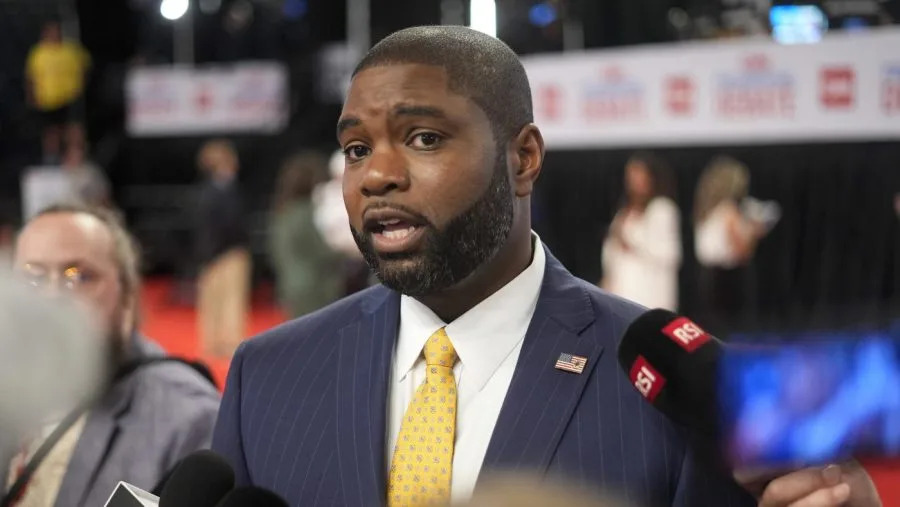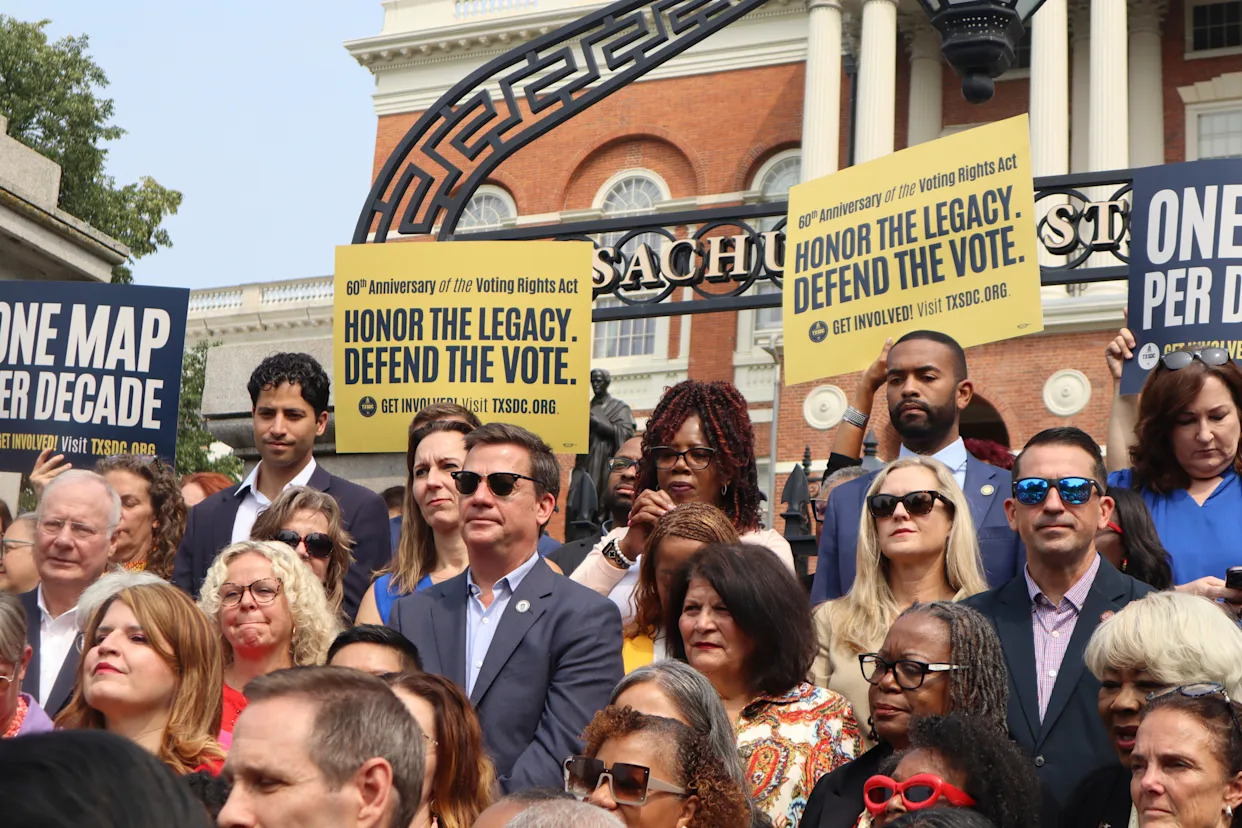Look, we’re all tired of the Sydney Sweeney discourse. But if it’s going to cost Democrats politically — and cost all of us brain cells — we should at least understand why it mattered. Let’s get through this together.
For the blissfully uninitiated: The actress Sydney Sweeney was the face of a new ad for American Eagle where they say she has “good jeans.” This is obviously a play on “good genes,” which to most people was a reference to how she is good looking, and to a small cadre of extremely online lefty posters and SEO-chasing online media outlets was a reference to Nazism and eugenics. The right made a whole thing about it, accusing Democrats of being out-of-touch scolds, and somehow Democrats have found themselves on the defensive. The episode caused confusion, consternation and a wave of Democrats performatively affirming that yes, they too think Sydney Sweeney is beautiful. Welcome to 2025.
You might be wondering why anybody cares about this. But here’s the thing: The fact that this moment became a thing at all — that a stupid pun could metastasize into a full-blown political moment — says something real about the media ecosystem we’re all trapped in. And it says even more about why Democrats keep losing the culture war, and with it, the narrative war that inevitably shapes who wins elections.
In recent months, Democrats (myself included) reeling from Kamala Harris’ defeat (a campaign I worked for) have soul searched about why we lost. There are a lot of reasons why — some of which are things that were in the campaign’s control, some of which were not. But high — perhaps the highest — in the latter category was the national information environment. It moved the cultural current away from Democrats, and still, to this minute, is why we’re struggling to find our footing.
There’s a fundamental asymmetry between the left’s information ecosystem and the right’s. Some folks have dismissed the effort to address this as “finding a liberal Joe Rogan” — a quixotic effort that is as ridiculous as it sounds. But the Sydney Sweeney affair has only underscored the political consequences of leaving the gap unaddressed: No one is going to vote on what Democrats think about Sydney Sweeney. They may well vote on whether or not the broader left is out-of-step with them culturally.
For the right, the media-to-politics pipeline is pretty clear. In this instance, it started with a few random right-wing social media posters spotting the conversation about the American Eagle ad happening among a few hyper-online lefty TikTokers and started talking about it themselves. Seeing that it was getting traction, right-wing media figures like Megyn Kelly started talking about it, too. Right-wing media talking about it made it spread to non-political creators and more mainstream media like the Washington Post and New YorkMagazine. Right-wing politicians — including President Donald Trump — saw it was breaking through, and jumped on it themselves in a bid to criticize Democrats. A circle of gripes, with Republicans seeming to score easy points against Democrats even though no elected Democrat had gone anywhere near embracing this in the first place, and wouldn’t (and shouldn’t).
Obviously, this chain of events had to do with more than just media mechanics. Messaging online is about metanarratives and implications — and this brought up the standard notion that the left is a buzzkill. It let the average person gawk, and say, “Isn’t this ridiculous?” And, of course, it’s attached to Sydney Sweeney, who is herself a viral lightning rod. But the right had the tools to take this from “a weird thing that happened” into “a thing that for some reason we’re all talking about.”
Meanwhile, in another corner of the internet, a bunch of conservative women started doing what appears to be actual Nazi salutes on Instagram (though some deny it). In many ways, it highlighted how ridiculous the “good genes” controversy was; as we saw during Medhi Hasan’s Jubilee episode, when right-wing influencers want to say they’re Nazi sympathizers, they don’t exactly use invisible ink. But it also served as a reminder: Here were people doing an actually egregious thing, and Democrats didn’t have the tools to make it stick. Indeed, Democrats have tried for years to tie the genuinely extreme, not-just-irritating views of the far right to the rest of the Republican Party, and most of the time, it fails.
So, what’s missing? I see two big things: First, Democrats need to invest in the communications infrastructure of today and tomorrow. And second, the party needs to recognize that message delivery has as much to do with resonance as persuasive value in and of itself.
Persuasion starts at home. You need an enthusiastic, online base that shares your worldview. Progressives write off the value of partisan media at their peril. The rightward shift of “cultural” spaces online is because of the gravitational pull of a profitable, self-sustaining right-wing ecosystem. It’s profitable because there’s an audience that wants it, but there’s an audience because they decided to invest in growing it.
Too often, left philanthropy focuses on two-year time horizons on projects that we can “prove” lead to electoral outcomes. What’s really necessary isn’t an effort to influence a specific election, but a long-term war plan aimed at shifting the cultural environment around us. If our party’s awakening to new media ends up with Democrats running “influencer campaigns” that are just a paid-media line item, we’re losing. This is about funding, underwriting and providing stability to the profitable media entities that can push our perspectives in the places where voters are actually learning about the world. Ben Shapiro, Megyn Kelly and Charlie Kirk didn’t get there on their own. They were invested in.
Which brings us to the other thing that stands in the way of us having nice things: We have a “television” view of politics, not a digital one — and the “television” view often crowds out digital decision making.
On the left, we start with a set of messages we’d like for people to believe. We then test (like, wow, do we test) messages for their persuasive impact. We use paid media to get those messages in front of people, at which point we meet public perception for the first time, and fight against it. We treat politics as the slicing and dicing of issues, not the formation of perceptions.
The right understands that virality is as much of a barometer for success as whether an argument is seen as persuasive. Conservatives use the internet as a testing ground for what has heat, and they work it up the ladder. Organic media wags the dog. Campaigns simply add kerosene to what people are already telling them they find resonant. In a world where voters don’t trust institutions, messaging that feels native to their own conversations will be significantly more effective than what’s being pushed to them in ads.
This isn’t to say that campaigns don’t matter, or that ads don’t work (in fact, another lesson from 2024 ought to be that they do). But they’re the last mile. If all you’ve got are ads after years of withering cultural definition, you’re going to be playing from behind. Our space is just optimized for return on campaign investment, not shaping the narrative terrain on which they’re fought. Republicans have an always-on machine that shows — not tells — people a story about cultural values. And that’s where real political resonance comes from.
There’s hope on the horizon. There is a hungry audience for left-of-center content that is fueling a massive outgrowth of upstarts. Outlets and creators like The Bulwark, Mutuals, Heather Cox Richardson, MeidasTouch and others are growing on YouTube, TikTok and Substack by the minute. But startups take investment, and if funders wait until close to the election to get started, it will be too late to influence both this one and the next one.
We’ve also seen that this kind of thinking can work when Democrats do it. Last year, both the Democratic presidential campaign and the broader progressive movement took Project 2025 from a viral curiosity and turned it into one of the Trump campaign’s worst negatives. And right now, the party is effectively seizing on the Jeffrey Epstein saga, despite some initial hemming and hawing. Until recently, I ran into no shortage of people in D.C. who said Democrats should move on from the so-called Epstein files to “economic issues” — not recognizing that Epstein is an economic issue. It’s about elites doing terrible things and protecting themselves, a metanarrative that appeals to Americans’ sense that the system isn’t working for them. Social media messaging is as much about implication as it is the blunt statement of fact.
The Sydney-Sweeney-of-it-all showed how creating conflict around negative cultural narratives can lead to positive political outcomes. Democrats will just not be able to do it ourselves until we have both the mechanisms to let people try stuff that gets viral engagement and the will to use that information in political decision making. It takes some different thinking than we’re used to: Our reliance on the TV-and-press strategies of yesterday no longer fit. And when things don’t fit, it might be time to get better jeans.








Comments